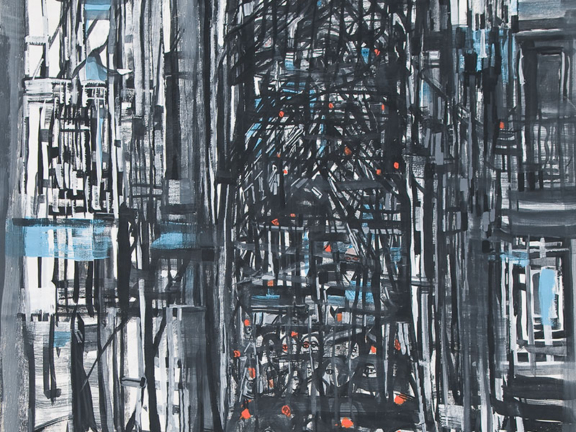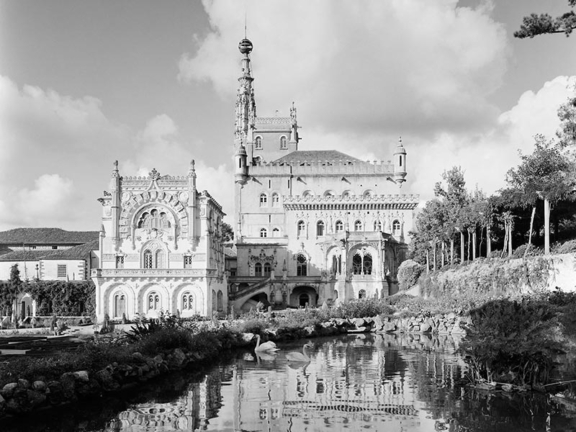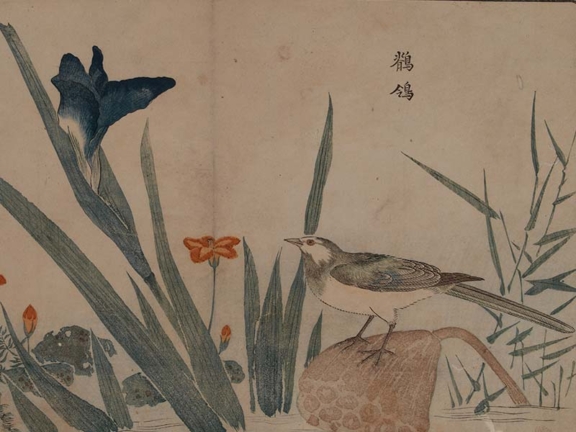
51 Avenue d’Iéna, March 1949
Everyday domestic life in Calouste Gulbenkian’s Paris house in the late 1940s is unexpectedly revealed through the household accounts.

Everyday domestic life in Calouste Gulbenkian’s Paris house in the late 1940s is unexpectedly revealed through the household accounts.

In the year marking the 35th anniversary of the first appearance at the Encontros ACARTE of the Tanztheater Wuppertal Company, directed by Pina Bausch, we look back at the participation and influence of this internationally celebrated dancer and choreographer, in and on the Calouste Gulbenkian Foundation's programming.

The project to preserve this collection reported here took place between September 2022 and July 2023 and was carried out as part of an internship for the master’s degree in Conservation and Restoration at the Faculdade de Ciência e Tecnologia of Universidade Nova de Lisboa.

Fernando Varanda talks about his professional experience in Yemen and his study of urbanism and traditional architecture in that country.

In the late 1940s, Calouste Gulbenkian, then resident in Portugal, paid special attention to the deep tensions generated in the Middle East, particularly those following the foundation of the new State of Israel, the discussion of the political status of Jerusalem and the consequences for the Armenian community in the Holy City.

Read about the different stages in the building of the Instituto de Investigação Científica Gulbenkian, later known as the Instituto Gulbenkian de Ciência.

The evacuation to Wales of a few paintings belonging to Calouste Gulbenkian's collection, on loan to the National Gallery in London, is a little-known episode in the history of the collection now housed in the Calouste Gulbenkian Museum in Lisbon.

Between 1933 and 1974, the Estado Novo censored and banned a long list of books, considering them capable of “perverting public opinion”. To celebrate the 50th anniversary of 25 April 1974, the Art Library is remembering this dark period in the country's recent history by showing some of these banned books in one of its special collections.

In the year marking the 50th anniversary of the Revolution of 25 April 1974, the Art Library and Archives remembers the posters with the slogan “A poesia está na rua” – Poetry is in the Street – by the painter Maria Helena Vieira da Silva.

Elections were held on 24 April 1975 to the Constituent Assembly, the first elections after the 1974 Revolution. The Calouste Gulbenkian Foundation played an important role.

Discover some of the capital's cinemas built in the 1930s to 1950s. Some are still in business; others have had their buildings converted or demolished.

The Art Library and Archives look back at the "Medal of Honour for Epidemics" awarded by France to Calouste Gulbenkian in 1919.

Discover some of the beaches, from the centre to the south of Portugal, described by writers and illustrated with photographs taken by the Novais Brothers.

The Iraq-Mediterranean Oil Pipeline, the world's first transnational oil pipeline, went into operation in 1935, having been built by the Iraq Petroleum Company Limited, consortium in which Calouste Gulbenkian owned his famous 5% share.

Discover some of the luxury hotels in Portugal built between the 1930s and 1960s, designed by architects in collaboration with artists.

Records relating to Calouste Gulbenkian's acquisitions of artworks from the Hermitage Museum in "Operation Hermitage".

We are celebrating the 50th anniversary of the publication of the book “O mundo é a nossa casa”, one of the first texts designed for a children's audience to contain an ecological message, in Portugal, at a time when the degradation of the planet's environmental conditions was still far from dramatically threatening the life of all species that inhabit it.

The Gulbenkian Children’s Choir was an ad hoc ensemble that grew out of the Foundation's music classes for children. Its public appearances included participation in orchestral and choral concerts, and it also made a number of recordings.

Calouste Gulbenkian embraced the fashion for "Japonisme" and his attention and taste for the art and culture of Japan is reflected in his personal library.

In 1967, the historic Week of Studies on the New Portuguese Cinema, organised by the Oporto Cineclube with the support of the Calouste Gulbenkian Foundation and the Oporto City Council, launched the debate on film production in Portugal.